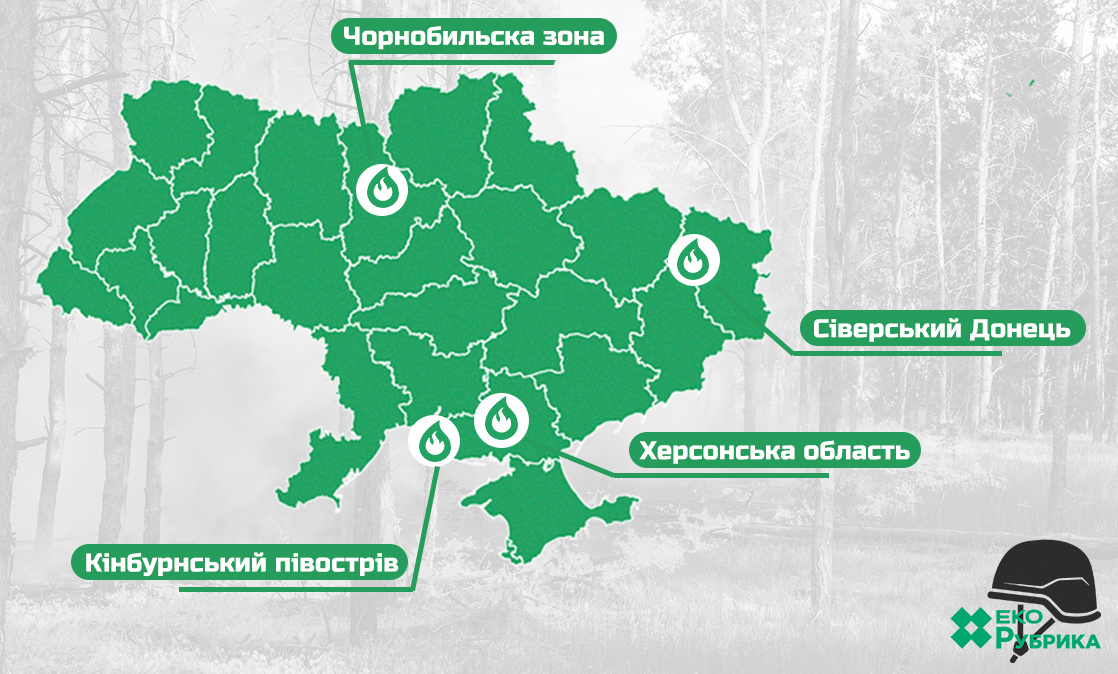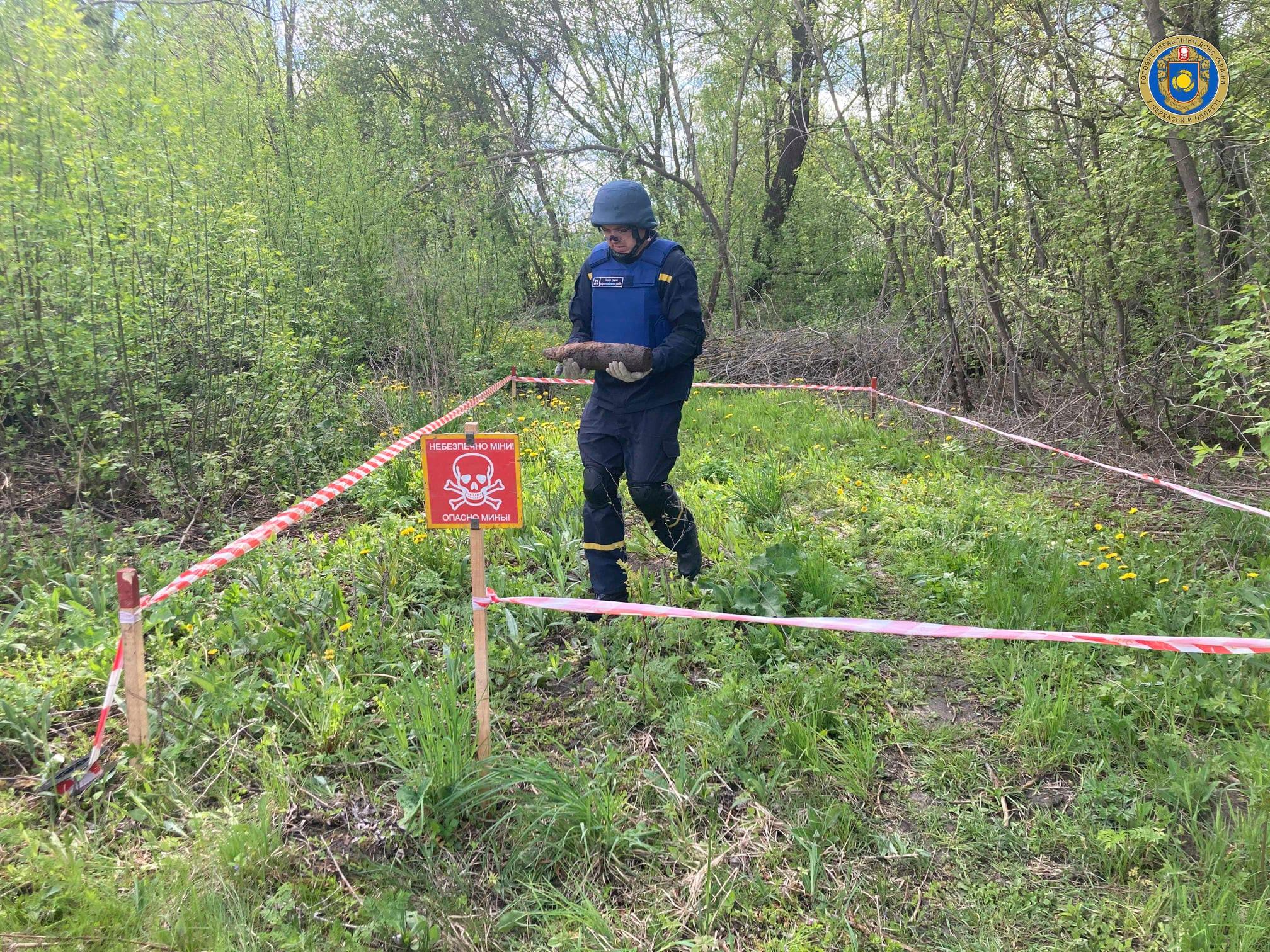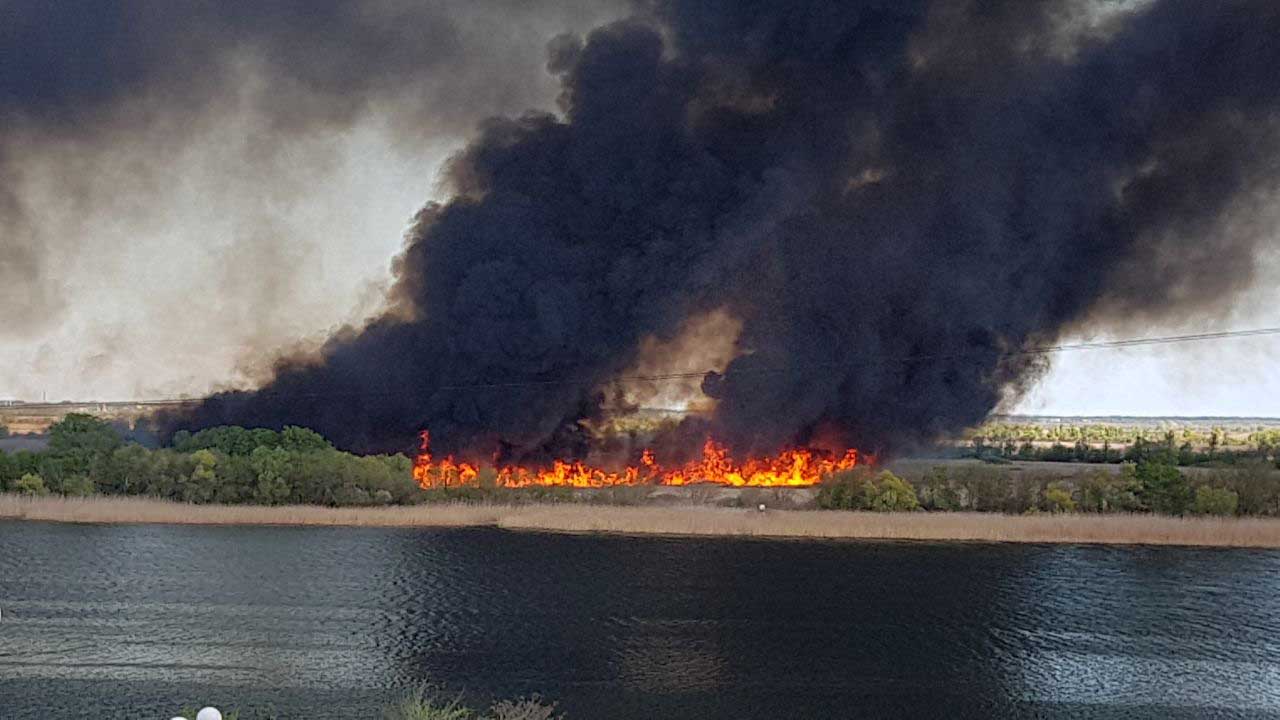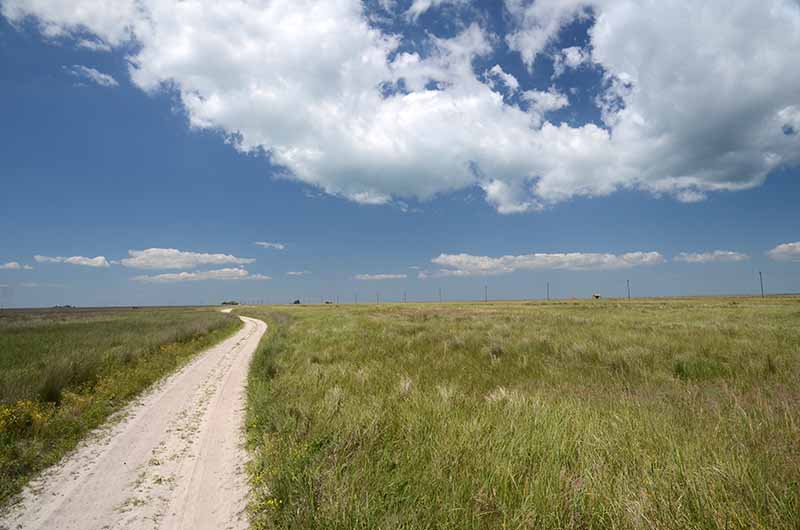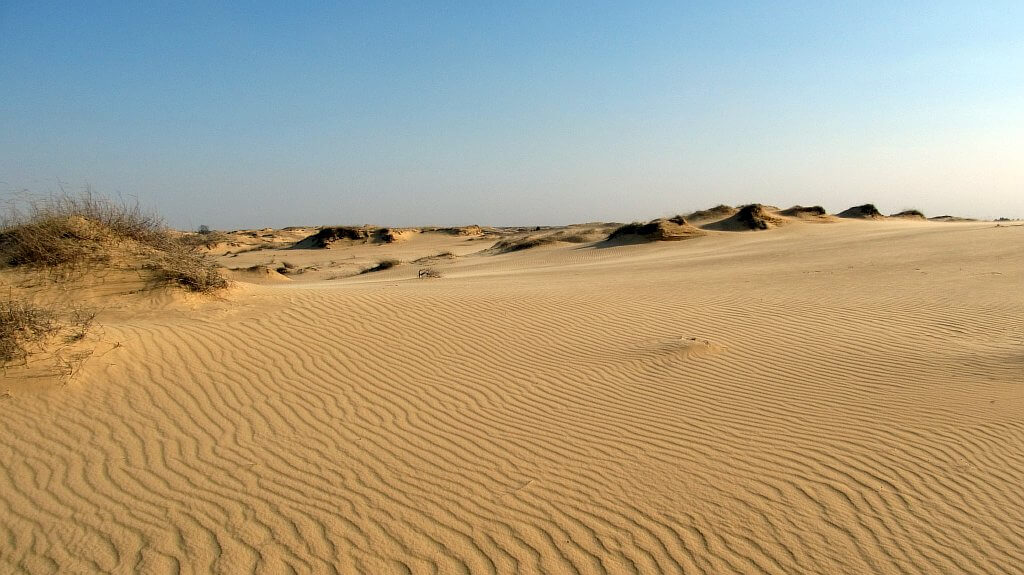
Since February 24, fires have engulfed more than 40,000 hectares of forest areas in Ukraine. Half of this area is the Chornobyl Biosphere Reserve. Ukraine's Ministry of Ecology, as a result of russia's military aggression, fires have occurred in Ukrainian forests in the spring three times more than last year.
The officials recorded a vast number of fires, in particular in the Chornobyl Exclusion Zone. This problem is especially acute not because radionuclides allegedly get into the air but because there are almost no firefighter vehicles left in the area: only five or seven remain out of fifty cars. In addition, forests in the Chornobyl zone have been mined, and each mine explosion is a potential new fire and more dead animals. So far, there have been no large-scale fires in the area, but we all remember the fires of 2020 when more than 100,000 hectares were burning. It could happen again.
In general, many forests have been mined in the country's north. There are already known cases when forest workers detonated mines, so certain areas are removed from economic use. Since demining forests is far from a priority for the State Emergency Service (since it focuses primarily on settlements), the rescuers may not get around to "reaching" these forests any time soon. On the other hand, there is a short-term positive impact, as forests will have time to recover without human intervention.
Ukraine observed a terrible situation in the Kherson region, where fires engulfed about 260 hectares of artificial forests. There is a theory that the occupiers set fire to the woods to fight the Ukrainian guerrilla movement. The fact is, at least for five days, the russians prevented the firefighting and didn't allow the forest guards to approach the fires. Locals suffocated from the smoke and feared for their homes, asking permission to put out fires; for several days in a row, the city was shrouded in smoke. Despite the air condition in the nearest towns, as LUN reports, being satisfactory and even good in some places, and heavy smoke being a temporary problem, the consequences of fires do not end there. Among them may be much worse ones.
"Who is the state at war with—forest birds or russia?"
Protection of forests during the war
In the context of hostilities, the focus on tree conservation is blurring, and forest protection, which wasn't a priority in Ukraine before the war, is becoming even less important.
"Apart from the direct impact of the war on the environment, there is also an indirect one. If we discuss which one is worse, I think it's the second one," Yehor Hrynnyk, a biologist and member of the Ukrainian Environmental Protection Group, said, adding that many new problems come up here.
The first problem is the increase in deforestation. The EU's fifth sanctions package against russia includes a ban on timber imports from the aggressor country. In response, the Minister of Ecology of Ukraine stated Ukraine would increase felling volume to partially replace russia and Belarus in European timber markets. Given that logging hasn't risen yet during the three months of full-scale war, experts predict the situation will change as the budget needs new revenues, which will come from selling resources, leading to more active deforestation.
The second problem is the lack of funds to finance forestry. They need money for forest protection too. Most forestries work on self-financing through deforestation, which is impossible due to forest mining, and they may have no money left for forest fire and waste protection. Unfortunately, this tendency is already observed in war conditions, and the work to create new protected areas in forests is stopped.
The third problem is that forest inspections are temporarily impossible. The state has banned visits in recent months because of the war, and control services could not inspect forests for illegal logging. Difficulties are also associated with a temporarily "closed" procedure called "environmental impact assessment"; the public did not have any access to information on deforestation.
The fourth institutional problem is lifting the "silent season" during martial law, i.e., the ban on deforestation from April to June during the breeding season.
"The motivation of this project is to increase the state's defense capabilities, but I have a question: who is the state at war with? With forest birds or russia? There is no logic in this," Yehor Hrynnyk criticizes the government's decision, "because nobody observes this legislation. When activists send reports to the State environmental inspectorate about illegal logging, there have been cases when the department responded: 'Now there is a war, and no one will check anything.'"
Forest conflagration and ecocide
Mass destruction of flora and fauna, poisoning of the atmosphere and water resources, or other actions that could cause an environmental catastrophe is a severe crime defined by the Criminal Code of Ukraine and covered by the Rome Statute. This crime is also called ecocide. However, this concept hasn't been used in the Ukrainian legislation yet. The problem is that the composition of such a crime covers too many evaluative concepts not reflected in the current Criminal Code of Ukraine or the legal positions of the Supreme Court of Ukraine. It applies to the "mass destruction of flora and fauna" because the Criminal Code of Ukraine doesn't specify at what stage of the damage the flora or fauna can be considered destroyed. The Criminal Code also doesn't establish quantitative criteria determining mass destruction.
"The Ministry of Ecology had a crazy idea to propose a law that would increase fines for fires, including the introduction of criminal liability if a fire leads to the mass death of animals. But that's not all. The Deputy Minister said in all seriousness that they would create a 'tax' for each dead animal: for each frog, say, 10 hryvnias; for each owl, 50. But how to calculate it? Who will walk in the woods and look for charred owls, and why do it at all?"
However, if you consider the issue meticulously, it's still possible to calculate how many birds or plants of a particular species there are per hectare of forest. However, it will be inaccurate data.
"We already understand that the damage is enormous. It is unclear what to do with this information," the biologist added.
What is the solution?
Natural vs. Artificial forests
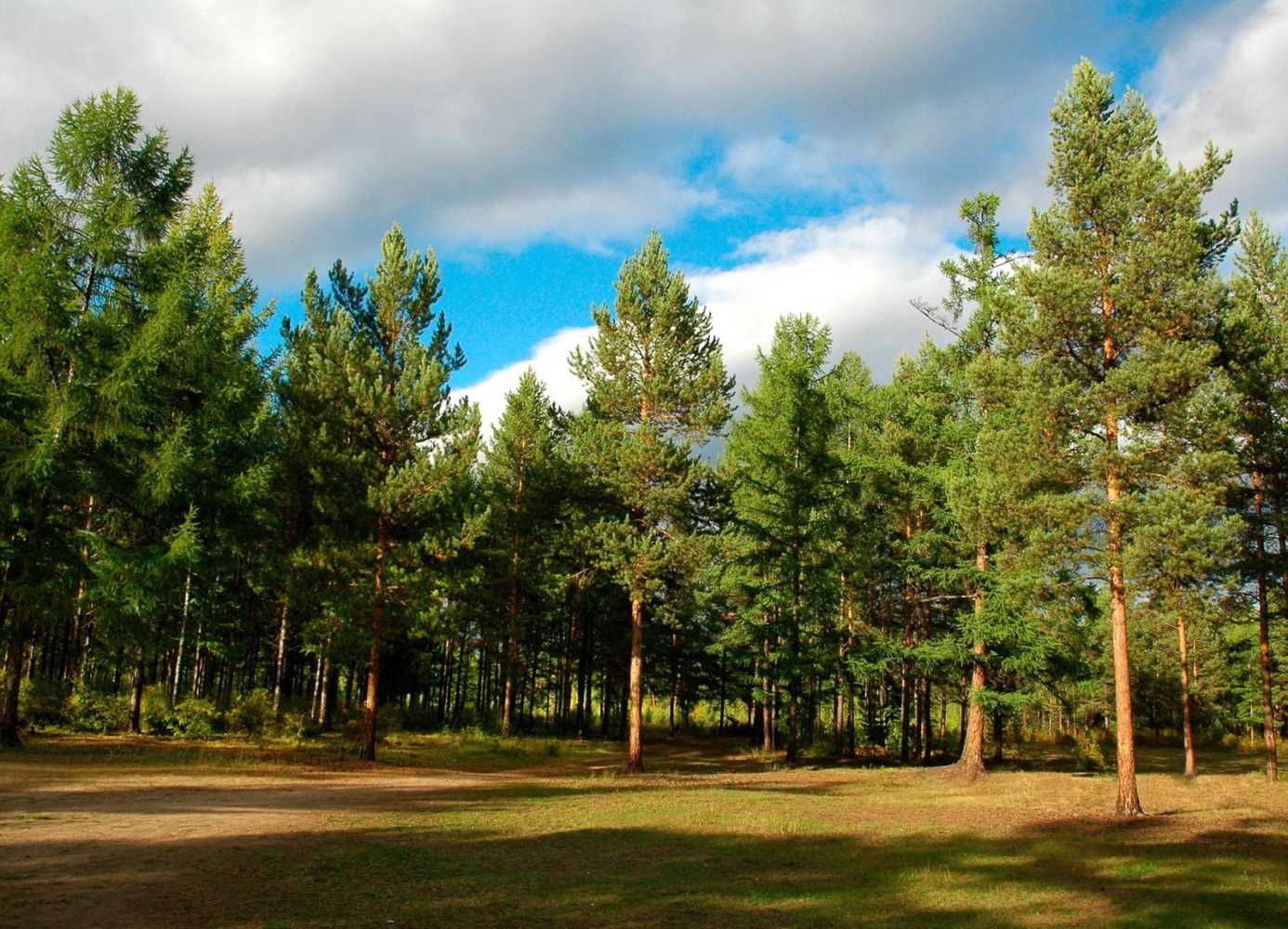
Oleshkivske forestry in Kherson region. Oleshkivsky forest is the largest artificial forest in the world
First, deforestation and the money we receive from timber sales are meager compared to the benefits forests give us if we manage them properly and don't see them only as a resource. For example, specialists from the Environment–People–Law organization assess that the Holosiivskyi Forest in Kyiv annually produces clean air, equivalent to 400 million hryvnias. The UN also estimates that the global economy's annual loss from biodiversity degradation is nearly $500 billion yearly. However, we still often consider the forest only as a source of wood. Without proper funding and supervision, artificial ecosystems will be almost useless: artificial forests clean air and water less sufficiently, and their fauna is much poorer than natural forests.
The second solution is to preserve the remnants of the natural forest rather than growing new forests, and here's why. Artificial ecosystems are less resilient and have a much higher risk of extinction because of diseases and pests. It is what happened to artificial forests in the Polissia region:
"In previous years, there was a problem with the bark beetle, which massively destroyed pine trees. Imagine a bark beetle that comes to the forest and, instead of many different species of trees of different quality and age, sees only the same pine in rows; for the pest, it's just a buffet," the biologist and member of the Ukrainian Environmental Group, Yehor Hrynnyk, says.
The resilience of a monoculture ecosystem (as is the case in artificial forests), according to Yehor Hrynnyk, is much lower than in the natural ecosystem. The more components in any system, the more likely it is that if one of these components falls out, the others will fall into place, and the ecosystem will continue to exist. It doesn't happen in monoculture.
"So if the bark beetle attacked a natural mixed forest, other trees would replace the pine trees destroyed by the beetle, and the forest would continue to be a forest," says Yehor Hrynnyk.
Additional funding from Europe can also solve the problem. The EU is currently preparing a Rebuild Ukraine tool—money to support Ukraine. For now, according to the plan, these funds will be spent under the green principles of the European Union.
"It would be great if these funds were accompanied by some more specific requirements for environmental reforms," adds the biologist.
Will it work?
What will happen when artificial forests disappear?
In the Kherson region, which was significantly damaged by fires this year, forests are artificial: people planted them to stop the desert from spreading. Creating forests, which became the most extensive artificial forests in Europe, began in the 1950s. The villagers conquered the territory from sands to arrange life and agriculture, and the thing they fought was substantial: the sandstorm could sweep away the house like snow in a heavy blizzard. The same, possibly, threatens the Kherson region even now. We asked Yehor Hrynnyk how substantial the threat was.
The specialist explains that the same problem exists with the forests around the Siverskyi Donets River, which are still burning; so far, it is tough to estimate the extent of the damage. Many of these forests, as in the Kherson region, are artificial and were planted in the steppes. Here the biologist asks the question. How bad is it that these forests have burned down?
"After all, they existed as an artificial ecosystem, created in place of the natural one. Two options are: the burned forests will restore naturally, or the steppes will restore. We can apply the same problem to artificial forests of the Kherson region," he explains.
"Now we hear all the time that artificial plantings are burning on the Kinburn Peninsula," the biologist continues, "and the problem is that people artificially created them in place of natural ecosystems. The fact that they are burning may not be good, but if they don't restore, the steppes will restore in their place, and these are ecosystems that are much more endangered than forests. Speaking of the steppe, we need to understand that it's a balanced natural ecosystem that protects soils from erosion and rivers from siltation." The biologist explains:
"Take any artificial field-type ecosystem. There is constant erosion: the soil is bare. When the wind blows, the surface layer of soil disperses, and during the rain, it is washed away and falls into rivers. As a result, the ground is depleted, rivers are silted up, and dust storms rage. The steppe doesn't have this because everything is well thought out there: the grass cover protects the soil well and accumulates fertile soil layers. The problem is that there are almost no steppes left in Ukraine, but imagine that more than half of the world's crops depend on insect pollination. These insects mainly live in steppes and meadows.
Yehor Hrynnyk says that the idea that "a place where trees grow is better than a place where nothing grows" has been inherited from Soviet times. The result is the last year's decision by President Zelensky to plant a billion trees in Ukraine. It turns out that we still actively grow them in the steppes in the south of Ukraine. Instead of forests, we get a destroyed steppe ecosystem and almost zero results because the planted trees don't take root in atypical areas. That is why it is worth thinking: are the fires in artificial forests on the Kinburn Peninsula a problem? It should be a steppe, not a planting:
"Perhaps it will lead to restoring the steppes, and it will be good," a biologist gives an unexpected conclusion.
However, not all environmentalists agree. Maksym Soroka, a professional ecologist, and expert in environmental safety and environmental management, noted that the statement about reproducing the steppes was a classic statement of environmentalists.
"From the view of classical biology, it is possible to return these territories to their previous state, but only if there were no people if people did not use these lands, and we returned, as putin tells us, to the eighteenth century," said the ecologist.
According to Maksym Soroka, artificial forests create an appropriate structure that allows the use of certain areas; they perform many functions, including drain restoration and balancing, and creating ecosystem services in the region. Artificial forests are a zone of local recreation, microclimate regulation, and water regime regulation.
"In some Luhansk region's districts, artificial forests were planted as windbreaks as an experiment in the 1970s, and they proved their effectiveness. This area has already been changed, and these forests are already in use," concluded Maksym Soroka.
So we see each phenomenon has two sides of the coin, and it is difficult to predict the consequences of forest fires. Finally, any ecosystem is capable of reproduction, and even the immense damage caused by the war can be restored over the years. All we need to do is not to worsen the condition of forests, take care of the environment, and try to get closer to the green principles of coexistence with nature.



